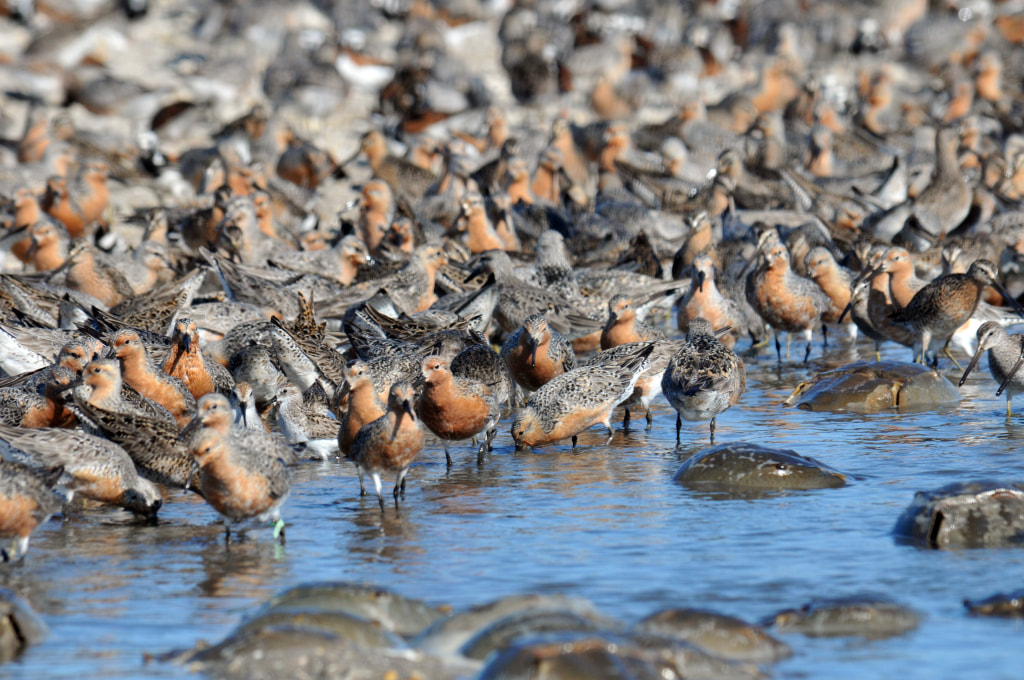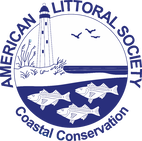|
Female horseshoe crabs in Delaware Bay will be protected for another year, according to a recent announcement from the Atlantic States Marine Fisheries Commission (ASMFC). Last year, tens of thousands of people like you spoke out against a plan to increase the bait harvest of horseshoe crabs in the Delaware Bay and your voices helped convince the ASMFC not to lift its decade-long moratorium on harvesting female crabs. The American Littoral Society would like to thank you for helping us protect the Delaware Bay's horseshoe crab population and the shorebirds which rely on the crab's protein-rich eggs to fuel their migratory journeys, such as the Rufa Red Knot. Red Knot populations collapsed during the 1990s, at the same time horseshoe crab populations plummeted due to unregulated overfishing, and the birds remain on the U.S. threatened species list. Unfortunately, along with the good news came some bad: the Commission’s Horseshoe Crab Management Board plans to increase the harvest limits for male horseshoe crabs for the 2024 season because - according to their new Adaptative Resource Management (ARM) Framework, which was adopted last year - the population of both female and male horseshoe crabs in the Delaware region is at its highest level since 2003. However, many independent experts and studies indicate horseshoe crab populations remain well below what they were during the 1980s. Egg density surveys conducted by the Delaware Bay Shorebird Project and other organizations show that the number of crab eggs available on Delaware Bay beaches are still only a fraction of what was normal in the past. The Society and its partner believe that egg density data is the most reliable indicator of the horseshoe crab population in the bay, but that data is not incorporated into the ASMFC ARM. “We know Red Knot numbers are so depleted that the species is listed as threatened, so we shouldn’t take risks we can avoid,” said Tim Dillingham, Executive Director of the American Littoral Society. “Using horseshoe crabs for bait could hurt not just the environment but also the economy of the entire Delaware Bay region. It’s just not worth it.” The revenue equivalent for turning horseshoe crabs into bait for eels, catfish, and conch is about $100,000 annually. In contrast, a 2006 study found that eco-tourism focused on Delaware Bay's migratory shorebirds was worth $34 million a year in New Jersey's Cape May County alone. With the help of members and supporters, the Littoral Society has been working for years to limit the harvest of horseshoe crabs. In 2008, working with the Audubon Society and the Delaware Riverkeeper Network, we led an effort that resulted in New Jersey's legislature passing a ban on harvesting any horseshoe crabs in state waters, with exemptions for biomedical use, including research and the development vaccines. The New Jersey moratorium remains in place, but it is the only one enacted by states bordering the bay. Environmental organizations in Delaware have launched an effort to convince the Delaware legislature to pass a crab harvest moratorium similar to New Jersey's. The Littoral Society will continue its work to protect horseshoe crabs and red knots – which includes our programs that put recapture and radio tags on them to gather more information about how many there are and how they move within the bay – and alert you to opportunities to help us influence the outcome through social media updates and emails sent to supporters. You can sign up for our email list on our website. Comments are closed.
|
Archives
July 2024
Categories
All
|


